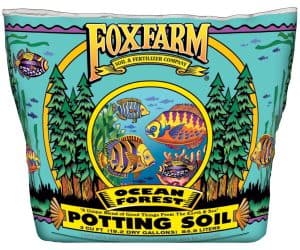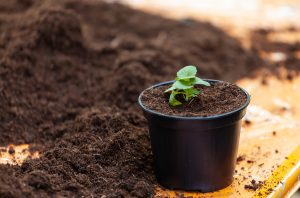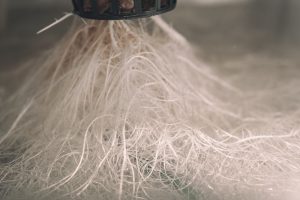If you’ve got ever opened a coconut and noticed the fiber-like and stringy interior, that’s the idea for coco peat. what’s coco peat and what’s its purpose? it’s utilized in planting and comes in several forms.
Coco peat for plants is additionally referred to as coir. it’s widely available and a standard liner for wire baskets.
What is Coco Peat?
Potting soil is instantly available and straightforward to use, but it’s its drawbacks. It often doesn’t drain well and will contain peat, which is strip-mined and causes environmental damage. another is coco peat soil. Planting in coco peat provides numerous benefits while recycling what was once a useless product.
Coco peat soil is created from the pith inside a coconut husk. it’s naturally anti-fungal, making it a wonderful option to start seed but it’s also employed in rugs, ropes, brushes, and as stuffing. Coco peat gardening is additionally used as a soil amendment, potting mix, and in hydroponic production.
Coco coir is so environmentally friendly that it’s reusable. you only must rinse and strain it and it’ll work perfectly again. during a comparison of coco peat vs. soil, the peat retains far more water and releases it slowly to plant roots.
Types of Coco Peat for Plants
You can use coir similar to sphagnum moss. It often comes pressed into bricks, which must be soaked to interrupt them apart. the merchandise is additionally found ground into dust, which is named coir dust and is employed to grow many exotic plants like ferns, bromeliads, anthurium, and orchids.
Coco fiber is that the brick type and mixed with soil to make air pockets that bring oxygen to plant roots. Coconut chips are available and stand up while aerating soil. employing a combination of those, you’ll be able to tailor-make the sort of medium that every sort of plant requires.
Benefits of Coco Peat
- High water holding capacity
- Acceptable pH & EC
- Excellent wettability, superior to peat
- Ability to retain nutrients against leaching and to buffer supply
- Unique water holding capacity
- Good drainage/aeration
- Less shrinkage
- Retains physical properties longer
- Lightweight
- No pests, weeds, or diseases
- Odorless and pleasant to handle
- Natural and renewable resource
- Uniform in composition
- 100% Organic
- Promotes strong root growth and plant vigor.
- Absorbs water readily and re-wets easily, thus reducing the need for wetting agents.
- Reduces watering frequency without plant stress, thereby reducing labor costs and minimizing plant loss
- Increases shelf life of plants
- The slow breakdown of material means the product will not shrink during your growing cycle
High water holding capacity while still maintaining excellent drainage and aeration
There are a variety of reasons why Coco Peat is becoming the medium of choice for several hydroponics setups. Many now favor it over its main competitor, peat, and once you take a glance at the perks it’s quite easy to work out why this might be so. Let’s take a look at the first advantages of this rising star of mediums.
Increased Water Capacity
Cocopeat can increase the water holding capacity of your potting mix, at the identical time that it also increases the porosity of your soil. this suggests there’s little worry of over or underwatering your plant. Being hydrophilic, it’s also quite easy to rewet, absorbing water quickly.
Very Little Is Required
A little Coco Peat goes an extended, long way. Coco peat has 3 variables that afford this, those being a high cation level, excellent water absorption, and therefore the high porosity. this suggests that you simply don’t must add large amounts of it to profit the standard of your mix.
It’s Compact and simply Shaped
Coco Peat could also be compressed quite easily to 1/5 or perhaps a touch but its original volume, which makes it quite easy to move or to store. Further, you’ll cash in on this by pressing your Coro Peat into desirable shapes as needed.
Superior Nutrient Absorption
Another reason for Coco Peat’s popularity is that the high cation exchange factor that comes with it being an organic medium. this implies that nutrients are basically released or absorbed as needed and this is often a certain perk.
Renewability
Coco Peat may be a by-product of coconut harvesting and before its properties were known, it had been simply off from the husks and discarded as waste. because it may be a natural part of procuring coconuts, it’s a resource that’s quite available and completely renewable.
Disadvantages of Coco Peat?
As with any growing medium, there are some caveats if you desire to use Coco Peat as part of your potting mix. We’ve taken the freedom of collecting these into one category so have a more complete picture just in case you’d prefer to do this medium for yourself.
Not All Coco Peat is that the Same
While it’s going to be employed in hydroponics and other kinds of farming, not all Coco Peat is that the same. it’s to be of a specific quality so as to be beneficial for hydroponics but because of its high demand, unscrupulous or just ill-informed vendors are selling inferior Coco Peat on the market.
Prone to Creep
Coco Peat has to be used fairly quickly, typically within some months of its production. If it’s not, then it’s quite susceptible to creep and this may end in the Coco Peat being notoriously difficult to rewet.
Poor Plant Support
The same high porosity which makes Coco Peat desirable also includes a caveat of its own. Coco Peat isn’t visiting be ready to support the burden of the many plants on its own. this can be not necessarily a dealbreaker, as a variety of mediums require a bit of reworking to properly support their plants but it’s still a drawback as compared to other mediums.
How to Use Coco Peat?
The coconut fibers are ground and compressed in bricks (most of the time) making them very easy to handle and they occupy less space than soil.
Reconstituting the Bricks
Coconut coir or peat comes in compressed form, it expands and increases up to five or 6 times in volume after it’s reconstituted. Break apart a coco block in parts and throw it in an exceedingly large bucket. Add enough amount of water to saturate the brick. Allow the dry coco peat to sit down within the water for a little bit time so it can become loose and absorb the water. Stir and fluff coco peat with a trowel after 10-15 minutes, add more water if it’s dry. Stop, if it’s loose. Stir and fluff again after some minutes to create sure all of it’s been moistened, add more water if it’s not loose yet. Once you see the moist and loose coco peat, it’s able used within the garden.
How to Use Coco Peat In Garden?
Coco peat is often directly incorporated into the garden soil to boost water retention, aeration and reduce the danger of soil fungus and root diseases. Mix in the soil at a 25/75 ratio. It can even be used as a mulch around garden plants to assist the soil to retain moisture and stop weed growth.
How to Use Coco Peat in Pots?
Coco peat will be used as a soil-less growing medium for potted plants or in aqua-culture growing environments. Add the reconstituted bricks to planters, leaving 1 inch of space below the planter rim. Plant a seed or seedling within the center. Fertilizer and soil will have to be added to sustain a plant long-term when it’s planted in coco peat. If you don’t understand how to use coco peat in pots–the way is to feature a 1/4 a part of coco peat within the potting mix. Container gardens dry out faster, so apply a 1-inch layer of coco peat over the container soil to assist the soil to retain moisture. Coco peat may also be a sole growing medium for starting seeds. Once the shoots start to make you’ll transplant seedlings into the plastic pots.
Tips on Coco Peat Gardening
If you get the sort in an exceedingly brick, put a pair in an exceedingly 5-gallon bucket and add warm water. Break the bricks up by hand otherwise, you can let the coir soak for 2 hours. If you’re planting in coco peat alone, you may probably want to combine in a very time-release fertilizer since the coir has few nutrients to disperse.
It does have much potassium similar to zinc, iron, manganese, and copper. If you want to use soil and add coco peat as an aerator or water retainer. Always moisten coco peat well and check frequently to stay abreast of plant water needs.




